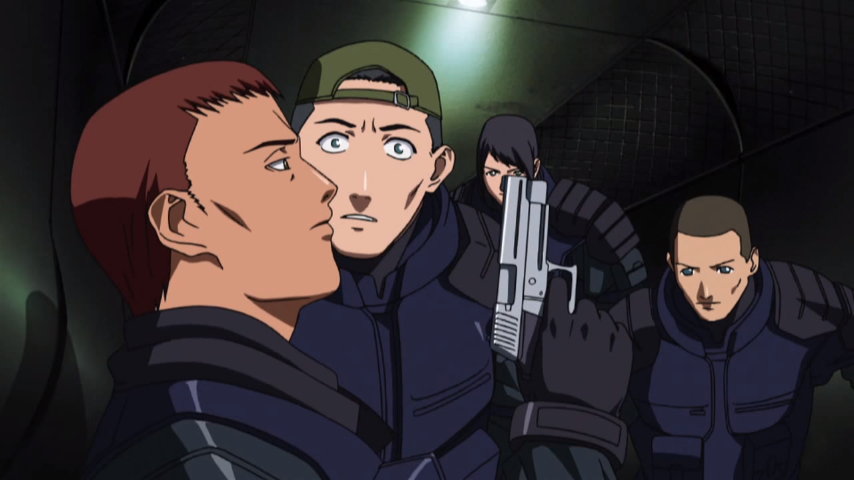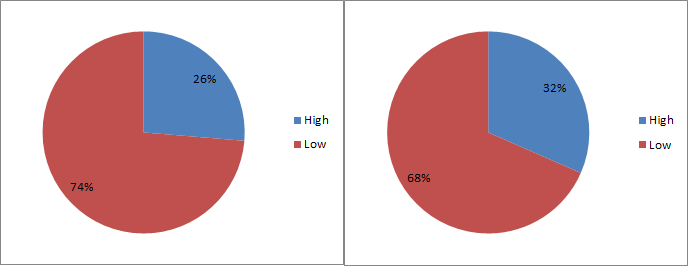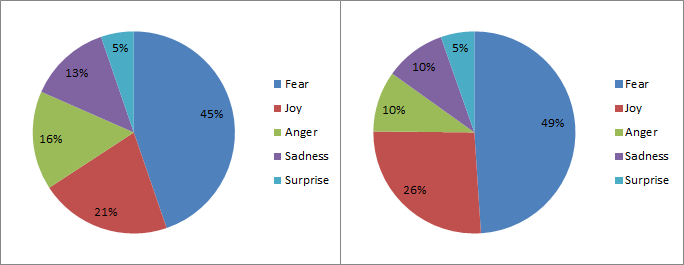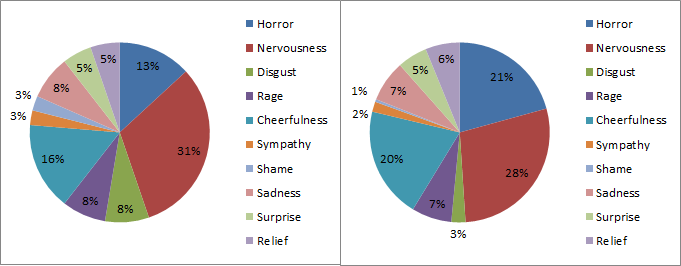The format of this piece will be a description of Elfen Lied Episode 1 Scene 4 with a to scale time line with emotion sections plotted with the following [itg-mediatip href=”https://somegamez.com/project/elfen-lied-study/attachment/episode_1_time_line” mediatip-type=”localimage” mediatip-content=”{&aquot;url&aquot;:&aquot;https://somegamez.com/wp-content/uploads/2016/02/episode_1_time_line.png&aquot;,&aquot;id&aquot;:2917,&aquot;link&aquot;:&aquot;https://somegamez.com/project/elfen-lied-study/attachment/episode_1_time_line&aquot;}” mediatip-link=”undefined”]Key[/itg-mediatip], where [itg-tooltip style=”color: #ca3c08; text-decoration: overline underline; font-style: italic;” tooltip-content=”<p>High Emotions refer to Emotions that connote ‘happy’ like feeling e.g Joy, Surprise and Love.</p>”]High Emotions[/itg-tooltip] are plotted below the time line (black line) and [itg-tooltip style=”color: #ca3c08; text-decoration: overline underline; font-style: italic;” tooltip-content=”<p>Low Emotions refer to Emotions that connote ‘sad’ like feeling e.g Anger, Fear and Sadness.</p>”]Low Emotions[/itg-tooltip] are plotted above.
Following this there will be a number of pie charts in the following format. Pie charts on the left are [itg-tooltip style=”color: #ca3c08; text-decoration: overline underline; font-style: italic; font-family: ‘Source Sans Pro’, Helvetica, sans-serif; font-size: 16px; font-variant: normal; font-weight: normal; letter-spacing: normal; line-height: 21.8182px; orphans: auto; text-align: start; text-indent: 0px; text-transform: none; white-space: normal; widows: 1; word-spacing: 0px; -webkit-text-stroke-width: 0px; background-color: #ffffff;” tooltip-content=”<p>A sum of the number of occurences of a category of emotion.</p>”]Totals[/itg-tooltip] of the scene, and pie charts on the right are [itg-tooltip style=”color: #ca3c08; text-decoration: overline underline; font-style: italic; font-family: ‘Source Sans Pro’, Helvetica, sans-serif; font-size: 16px; font-variant: normal; font-weight: normal; letter-spacing: normal; line-height: 21.8182px; orphans: auto; text-align: start; text-indent: 0px; text-transform: none; white-space: normal; widows: 1; word-spacing: 0px; -webkit-text-stroke-width: 0px; background-color: #ffffff;” tooltip-content=”<p>A sum of the time spent during the episode on each category of emotion.</p>”]Screen Time[/itg-tooltip]. Lastly the raw data for this scene will be presented in the form of a table.
Follow this link to the main entry for this article series.
Spoiler Alert! You’ve been warned!
Scene Overview
The first episode of Elfen Lied is indeed an interesting ride. As viewers we are introduced to a scene of violence and Horror, and though we find a glimmer of Joy, it serves only to fuel the Disgust and Rage we feel towards the one responsible for Kisaragi’s gruesome death.
The following scene shifts gear by employing a number of different emotions which creates significant contrast with the previous scene. Relief, Surprise, Sadness, extended periods of Cheerfulness are evoked with such methods as soothing music, nature, natural light, and the introduction to a more ‘normal’ world with ‘normal’ characters. Yet even then we sense sadness behind a veil of normality.

The third scene serves to build tenseness as we return to jarring scenes of Lucys aftermath. The third scene is more like the first in its ‘[itg-tooltip tooltip-content=”<p>A informal phrase refering to the emotions employed.</p>”]emotional makeup[/itg-tooltip] ‘ with mostly Low emotions being used. We are left nervous by the introduction of Bando, a seemingly brutal, cruel and unfeeling character who’s objective is to eliminate Lucy by order of Kurama.
Finally we transition to the Episodes climax with a confrontation between Kouta and Nyu, who runs off into the night. We are hooked waiting for the outcome, our third scene tenseness fueling our anxiousness as Bando approaches, harboring fatal intentions.

A number of personal observations considering the totality of the scene:
- A worlds morality can be ‘developed’ through contrasts, and interactions between characters. Audiences come to grasps with the worlds mortality through reactions to actions and thought. One such method employed in the Episode is setting the tone through the more ‘sane’ actors of the scene, this is notable with Bando.
- Characters can serve emotional functions, for example Yuka creates Relief, Kisuragi death creates Disgust and Rage.
- Nervousness was the most evoked emotion throughout the Episode. Nervousness is a smart emotion to use as it creates an ’emotional high’ for a viewer, which the creator can use to ’emphasize’ following emotions such as Horror, Surprise or Joy. This technique is a well know part of creating cliff hangers.
- The episode feels like an emotional journey of [itg-tooltip tooltip-content=”<p>A period of tension.</p>”]tense[/itg-tooltip] and [itg-tooltip tooltip-content=”<p>A period of ‘relaxation’.</p>”]release[/itg-tooltip] which is, from what I have read, a good way to structure the difficulty of a video game. The first scene is high tense, the second high release, the third low tense, and the fourth medium tense.

Pie charts

Episode one is clearly not a happy episode with being 74% Lows and 26% High sections, and is similar in terms of Screen Time as well.
In most cases it appears that High sections seem to be longer given the Screen Time is a higher percentage than the Totals.

Some observations of the Primary Emotions employed in the episode:
- Nearly 50% of the entire episode is spent in emotions of Fear in both terms of Screen Time and Totals.
- Nearly a quarter of the episode is spent on Joy.
- Anger and Sadness are nearly equal, both are greater in Totals and less in Screen Time indicating more sections of shorter time.
- Surprise is at 5% and is the lowest Primary Emotion.

Some observation of the Secondary Emotions employed in the scene:
- Nervousness, Horror and Cheerfulness make up the largest emotions used throughout the episode.
- Nervousness occurs the most with nearly a third of the episode being spent on it.
- Cheerfulness is an often occurring emotion and is similar in terms of both Totals and Screen Time.
- Horrors Totals is 8% less than its Screen Time indicating longer sections of Horror.
- Rage, Disgust, and Sadness are equal in terms of Totals.
- Disgust Totals is 5% less than its Screen Time indicating shorter sections of Disgust.
- Surprise and Relief make up only 5% of total emotions and are near equal in terms of Totals and Screen Time.
- Sympathy and Shame are the least occurring emotions, and are near equal in terms of Totals and Screen Time.
Raw Data
Raw data for each data can be found in each scenes respective study.
Totals Counts
Statistics related to Totals in Elfen Lied Episode 1 Scene 4.
High/Low
| High | Low |
|---|---|
| 10 | 28 |
Primary Emotions
| Anger | Fear | Joy | Sadness | Surprise |
|---|---|---|---|---|
| 6 | 17 | 8 | 5 | 2 |
Secondary Emotions
| Horror | Nervousness | Disgust | Rage | Cheerfulness | Sympathy | Shame | Sadness | Surprise | Relief |
|---|---|---|---|---|---|---|---|---|---|
| 5 | 12 | 3 | 3 | 6 | 1 | 1 | 3 | 2 | 2 |
Screen Time Counts
Statistics related to Screen Time in Elfen Lied Episode 1 Scene 4.
High/Low
| High | Low |
|---|---|
| 399 | 865 |
Primary Emotions
| Fear | Joy | Anger | Sadness | Surprise |
|---|---|---|---|---|
| 619 | 331 | 123 | 123 | 68 |
Secondary Emotions
| Horror | Nervousness | Disgust | Rage | Cheerfulness | Sympathy | Shame | Sadness | Surprise | Relief |
|---|---|---|---|---|---|---|---|---|---|
| 262 | 357 | 32 | 91 | 253 | 23 | 6 | 94 | 68 | 78 |